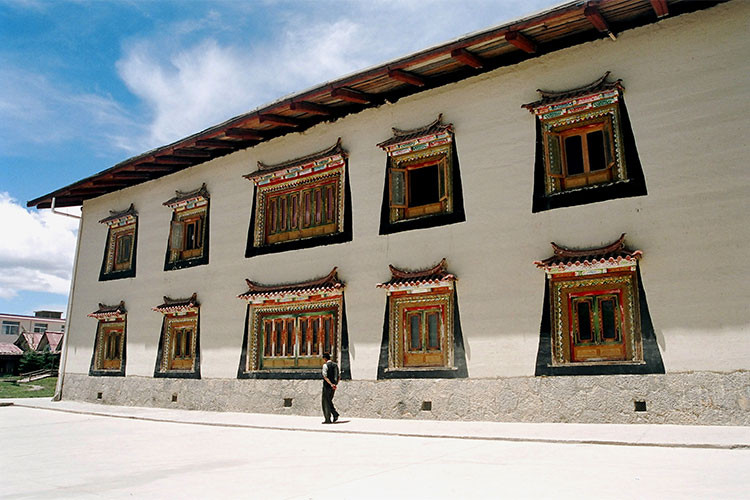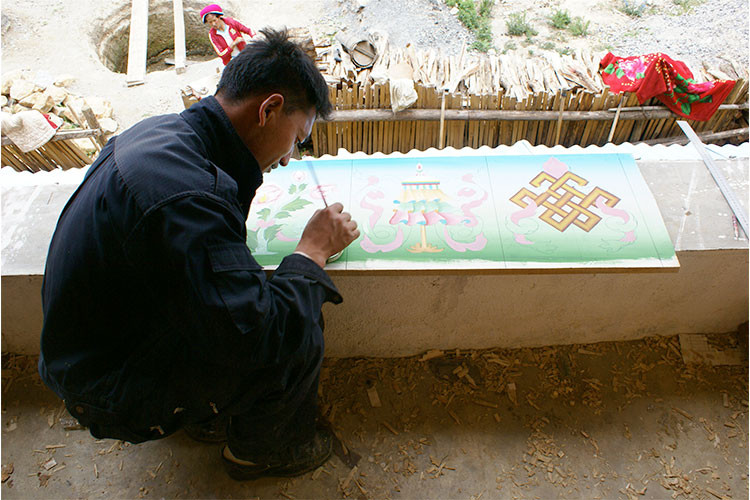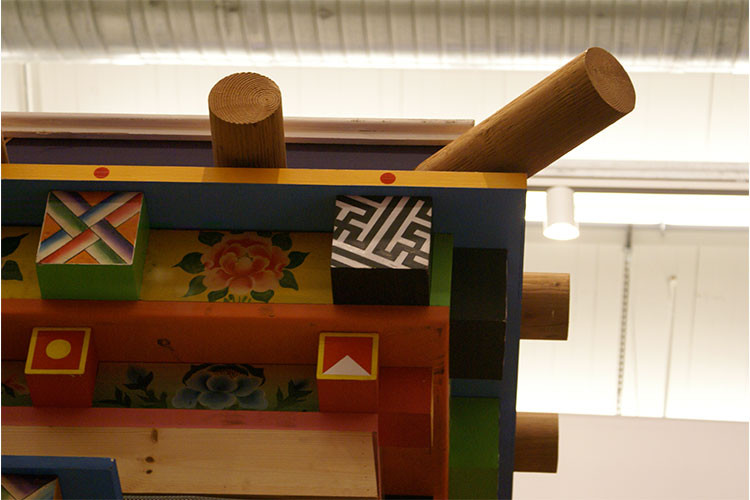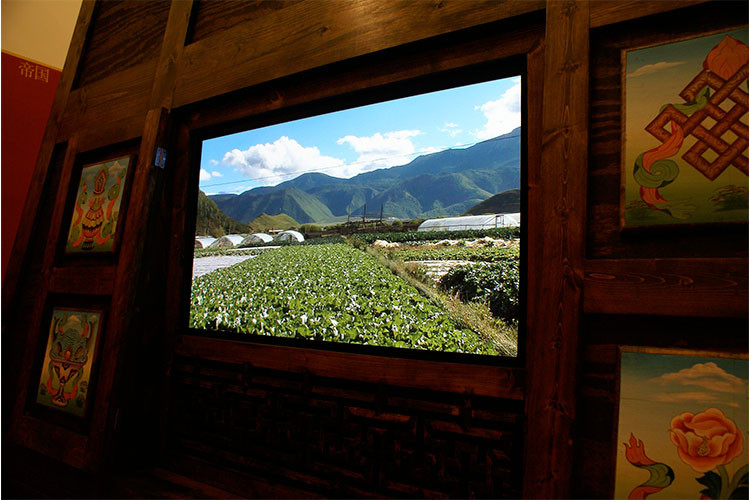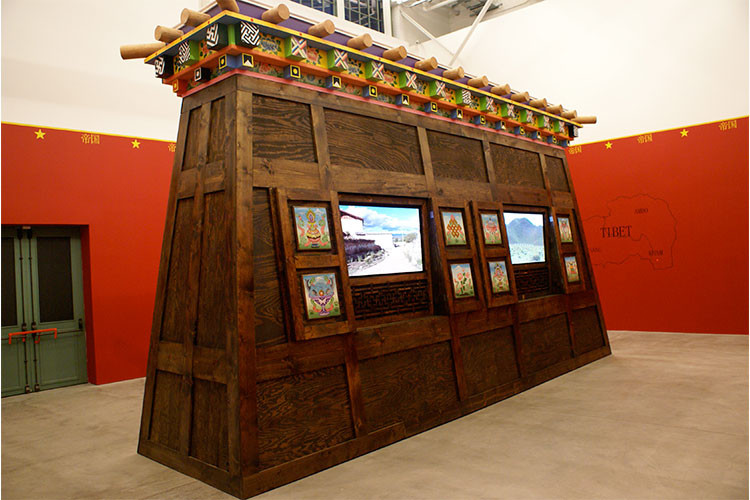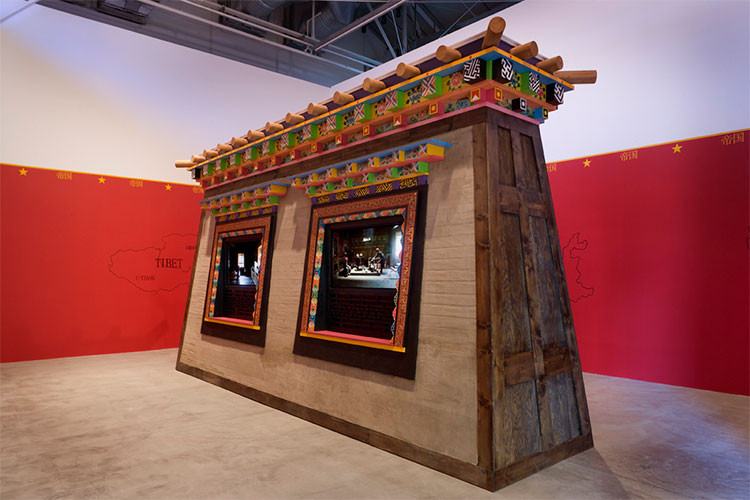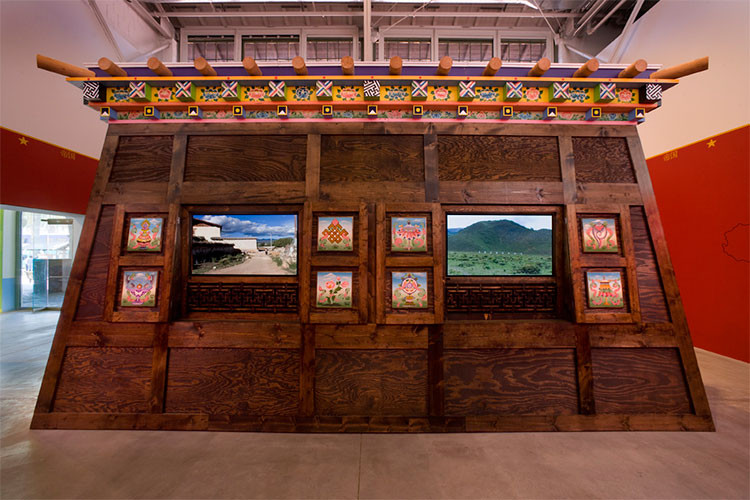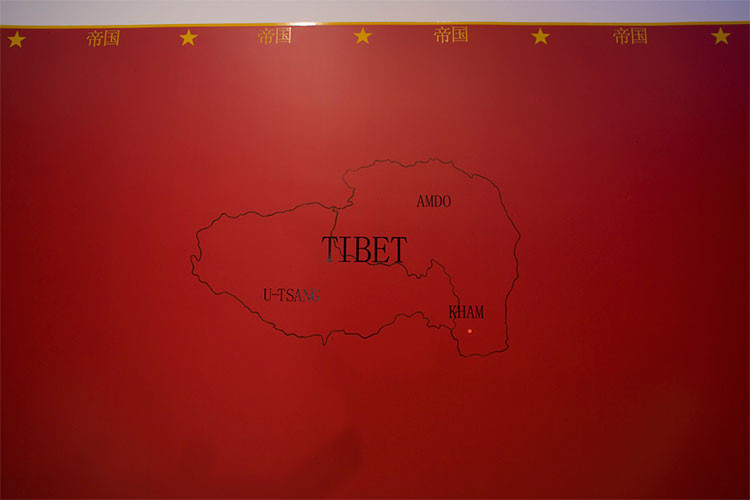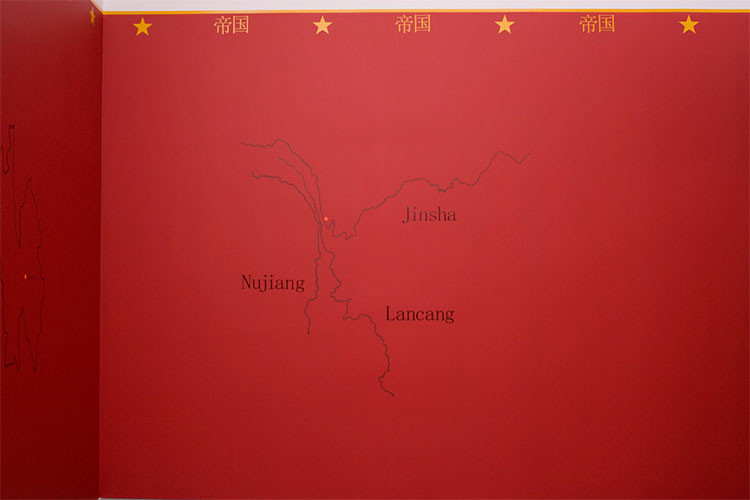Shangri-La: The Volatile Dream
Invited to participate in an artist residency in one of a number of UNESCO World Heritage sites, ERRE spent an extended time in the Three Parallel Rivers area of China’s Yunnan Province in a region now known as Shangri-La (named after the imagined paradise of the 1933 novel Lost Horizon). The artist’s observations of the culture and landscape in the popular tourist destination resulted in an installation that addressed the Tibetan traditions of the region (which borders what is currently considered the Tibet Autonomous Region but was once a Tibetan settlement), along with contested histories and conflicted relationship between China and Tibet. The artist built a wooden, wall-like structure (a condensed home) that evokes traditional Tibetan architecture and celebrates Tibetan artisans. One side of the wall mimicked the architecture of a typical Tibetan exterior, the other, the craftsmanship and decorative detailing of an interior. Each side included two carved windows which framed videos that the artist recorded of the local landscape (played on one side of the wall) and home life (played on the other). The walls of the exhibition space were painted red and featured simple line drawings of differing maps which indicated the changing status of Zhongdian (Shangri-La).
The video installation is formed by a sculpture. The dimensions are 21.5 ‘ long x 5’ wide x 12 ‘high.
